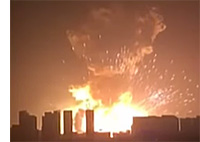On the morning of Thursday, Aug. 13, 2015, I woke to find dozens of posts from netizens clamoring about events that had occurred late the night before. There had been two massive explosions reported from a warehouse in Tianjin, a prominent port city in northern China.
|
ADVERTISEMENT |
Shockwaves were felt several kilometers away from the blast site, and soon phone videos of the explosions taken by people in Tianjin revealed the extent of the disaster. Eyewitness accounts started to clash with state media reports. Despite the best efforts of the Chinese government to downplay the incident and censor those who were sharing what they had seen, both videos and speculation proliferated.
While the true number of casualties and some other facets of the disaster are still uncertain, this article will illuminate, based on what is known, how the Tianjin warehouse explosions could have been prevented through the use of an ISO 9001-type audit.
What we do know about the Tianjin explosions

…
Add new comment